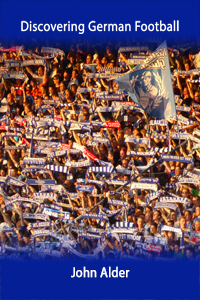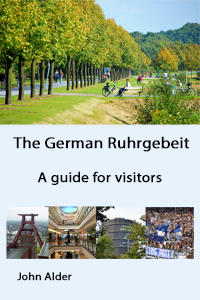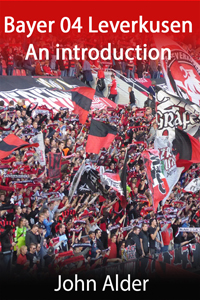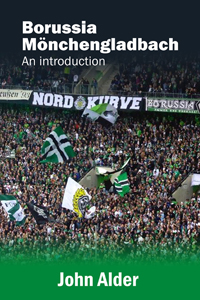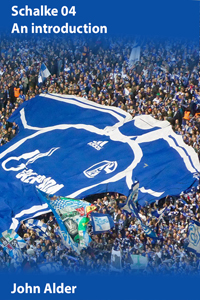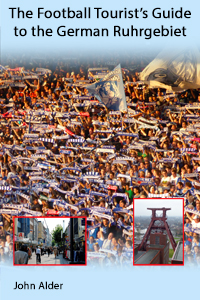Going to watch Hertha Berlin is a must for any football trip to Berlin. The full name of this historic club is Hertha Berliner Sport-Club von 1892. Hertha BSC was one of the founder members of the Deutscher Fussball Bund (DFB), which came together in 1900, and of the Bundesliga, which was founded in 1963. Since 1997 Hertha have spent all but two seasons in the Bundesliga and came 10th in 2017/18.
Hertha Berlin’s nickname is “die alte Dame”, which means “the old lady. The club’s colours are blue and white.
Stadium
Since 1963 Hertha have played in the Olympiastadion, which was initially built for the 1936 Olympics.
It has the highest permanent seating capacity in Germany (74,475) and is the second largest stadium in the country (the largest is Dortmund’s Signal Iduna Park). Average attendance in 2017/18 was 45,319.
Despite its age, the stadium has had several major renovations and now has a partial roof.
The German national team plays here, and the stadium hosted six matches in the 2006 world cup. It is also used for cup finals, including the 2015 Champions League final.
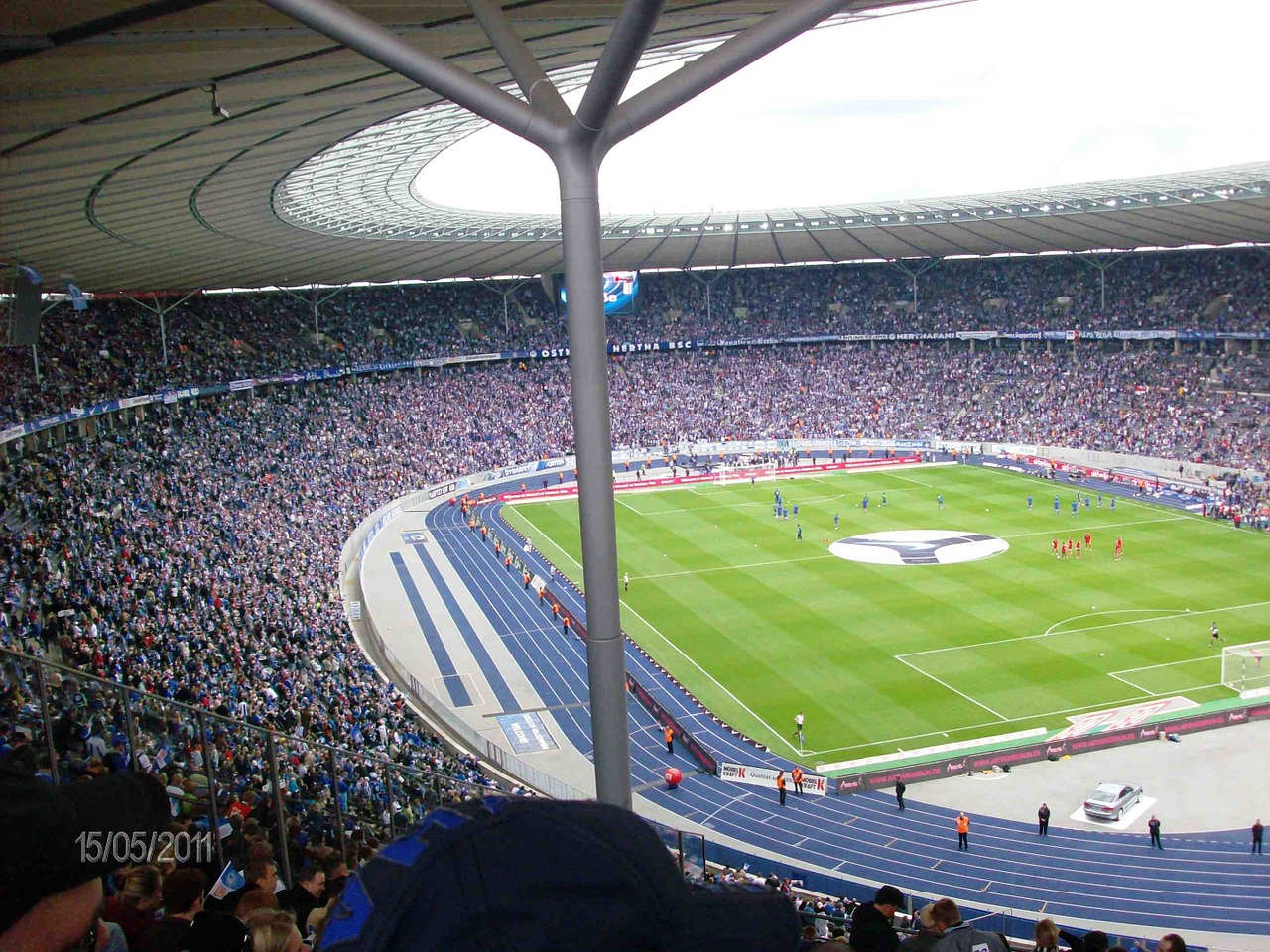
Tickets
Prices start at 15 euros. There is an online ticket shop. You can also order tickets by phone (+49 (0)1806 – 51 53 01) or email via a contact form on the website.
Getting to Berlin
Berlin has two international airports.
Berlin-Tegel is to the north-west of the city and Berlin-Schönefeld to the south-east. The two airports run a combined website, which will give you a good idea of departure points.
Getting into town is simple:
- From Tegel, bus 128 will take you to “Kurt-Schumacher-Platz” where you can take the U6 underground into the city centre.
- The S9 and S45 trains link Schönefeld to the city transport system. A taxi will cost about 25 euros.
There are regular trains between Berlin and Leipzig. You can order a ticket with Deutsche Bahn or Loco2.
Getting to the Olympiastadion
The club website has clear instructions (in English) to help you get to the ground.
You can get all the way to the Olympiastadion by underground (U2), train (S5) and bus (M49 and 21)
Inside the Olympiastadion
There is a cashless payment system inside the ground: you buy a card which is charged with 10 euros and use it to buy food and drink. If you need more, you can top it up at machines, and if you don’t spend it all, you can get a refund after the game.
Other things to do in Berlin
You could spend weeks in Berlin and still not see and do everything this fantastic city has to offer. Assuming you are only here for a couple of days and will be spending at least some of your time on football, here a few things and places you might like to try.
See the city from a double-decker bus
A 24-hour hop-on-hop-off bus ticket costs 22 euros and lets you see all the main sights, getting off and on as the mood takes you. There are two routes. If you stayed on board all the time, each would take you two hours. If you pay 34 euros, you can also take a boat trip. There is a commentary in English, and it’s a great way to work out the geography of the city and decide what you want to do next.
Spend a morning in the city centre.
There are several key sights all within walking distance of each other:
The Brandenburg Gate
This was initially conceived as an arch of peace, but it has often been used to glorify war and military power. For example, in 1933 the Nazis staged a massive torchlight procession through the gate to signify the start of their “1,000 Year Reich”.
During the Cold War, the gate was right next to the Berlin Wall. It was here that US President Reagan gave his famous speech after the Wall was removed, and today it is used as a setting for events, celebrations and concerts.
Reichstag
The German parliament meets here. The building is topped by a magnificent domed roof, designed by British architect Sir Norman Foster. If you walk to the top, you can enjoy outstanding views of the city. An audio guide tells you about the building and its history, as well as identifying the main structures nearby. For security reasons, you have to book this visit in advance and bring your passport with you.
Memorial to the Murdered Jews of Europe
This monument, which is sited between the Reichstag and Potsdamer Platz, was built in remembrance of the Jews murdered by the Nazis during their reign of terror. It consists of thousands of concrete blocks.
Potsdamer Platz and the Sony Centre
Once the centre of Berlin, this large square was devastated during the war. And then, because the Berlin Wall cut it in two, it remained a wasteland until the 1990s. Since reunification, it has been renovated. The Sony Centre is a quite remarkable modern collection of restaurants, shops, offices and appartments. The architect, Helmut Jahn, wanted to create a sheltered public space with as much light as possible and so placed a huge textile roof over the square in the centre. At night there is a constantly changing light display in the roof which you can see right across the city. You can find out more about this intriguing place here (https://www.sonycenter.de/en/architecture)
If you are interested in cinema and TV, you might like to visit the Museum for Film and Television (https://potsdamerplatz.de/en/entertainment-culture/around-the-potsdamer-platz/deutsche-kinemathek/), which hosts a permanent exhibition about the history of the industry in Germany.
Checkpoint Charlie
When the city was divided by the Berlin Wall, there were several heavily guarded crossing points between East and West. This is probably the most famous. There is a museum showing the desperate measures East Germans adopted to try and escape – and how brutally the East German regime tried to stop them. Find out more here (https://www.visitberlin.de/en/mauermuseum-museum-haus-am-checkpoint-charlie-wall-museum)
Wander down the Kurfürstendamm
This 2 miles long tree-lined boulevard is packed with shops, restaurants and pavement cafes. Before the Wall came down this was pretty much the centre of West Berlin, and it still feels more like a city in the west of the country. Right next to the “Ku’damm” you will find the Kaiser-Wilhelm-Gedächtniskirche. This is the ruin of a church which was hit by bombs in 1943. It has been left unrestored as a reminder of the costs of way. One of the centrepieces of the exhibition inside is a cross made of nails retrieved from the rubble of Coventry Cathedral, which was also destroyed during the war.
Visit the Berlin War Memorial
Most of the wall which cruelly divided this city from 1961 to 1989 has been removed, but this 1.4-kilometre stretch has been left to remind us of what it was like to be in a city divided by concrete, barbed wire and machine guns. You can walk along the ‘death zone’ between the inner and outer walls. Of course, the floodlights, guard dogs and trip wires have been removed, but a watchtower remains and displays explain just how brutally the East German authorities stopped their citizens from leaving. There is also a free exhibition at the visitor centre which describes the history of the Wall and tells the stories of the people who tried to escape – some were successful, many lost their lives trying to reach the West.
If you go to the nearby station (Nordbahnhof), you will find a fascinating exhibition about ‘ghost stations’. Several underground and S-Bahn lines still used by West Berliners ran under the Wall and across the entire city. The stations in the East were closed off to prevent escapes, and so these trains would slow down and pass through these stations without ever stopping.
Visit the DDR Museum
(https://www.ddr-museum.de/en)
If you are interested in the Cold War or want to find out what life was like in the communist German Democratic Republic, you should spend some time in the DDR Museum. It’s packed with interactive displays and exhibits which bring back what it must have been like to live under this regime.
Go to a bar and watch more football.
This post by City Hostel Berlin lists some of the best places to enjoy a beer and a game
